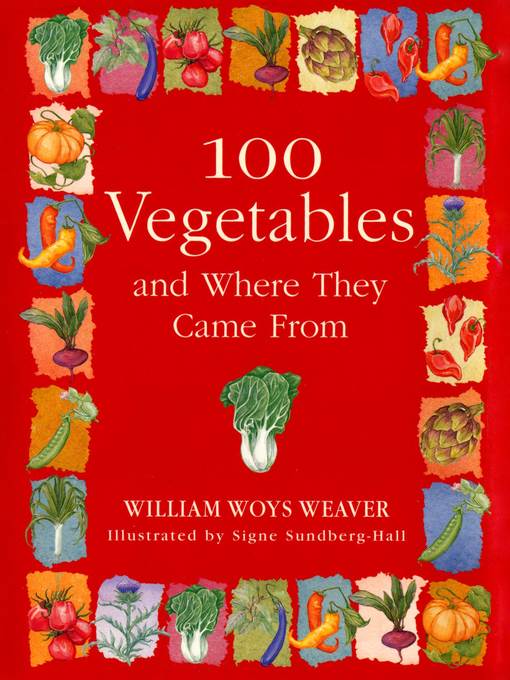
100 Vegetables and Where They Came From
فرمت کتاب
ebook
تاریخ انتشار
2013
نویسنده
Signe Sundberg-Hallناشر
Workman Publishingشابک
9781565126862
کتاب های مرتبط
- اطلاعات
- نقد و بررسی
- دیدگاه کاربران
نقد و بررسی

October 23, 2000
When is a squash more than a squash? When it is one of Weaver's selected classic heirloom vegetables. In this book, which he maintains is both "a garden book for cooks and a cook's guide to the garden," Weaver relates the botanical and cultural histories of vegetables originating from every corner of the globe, from Turkmenistan to France, and from Switzerland to South Africa. He doesn't just include such exotic vegetables as orache, purple youtia, yacon, bambara and tartar bread plant; he also notes subtle differences in texture, flavor and origin of countless varieties of peppers, potatoes, beans, tomatoes and other familiar vegetables. Thus, he pronounces Arran Victory potatoes (Scotland) to be "the ultimate potato," with "color so intense they resemble candy imitations," whereas the Beauty of Hebron (New York) is praised for its vigor and its early maturity. He notes that Jerusalem artichokes, which were considered by the French in the 18th-century to be "the worst vegetable," later found favor with the Pennsylvania Dutch. Weaver's choice of vegetables is not limited to those of interest to gardeners; they must also possess culinary merit. To stimulate curiosity in these qualities, he includes cooking recommendations with each vegetable profile. For example, he suggests that Chioggia squash, dating back to 16th-century Venice, is delicious sliced and grilled with olive oil, and that the Alma pea (Sweden) is best served with crayfish, a porter flavored with dill, and a little Chopin in the background. Readers will be pleased to see a source list for seeds of these classic vegetables, which are aptly illustrated with Signe Sundberg-Hall's detailed drawings.

November 15, 2000
Frustrated with the uniformity of potatoes, carrots, peppers, and peas found in most grocery stores, connoisseurs of vegetables have turned to ancient and rare varietals to add color and taste to their tables. Gardeners have risen to the challenge of raising something unusual in their plots. Instead of rows of popcorn, gardens yield crops of nunas, popping beans first cultivated by South American Indians. Potatoes come up from underground in innumerable shapes, sizes, colors, and flavors. And they carry odd names such as the Beauty of Hebron. Gardeners also have taken these heirloom plants to heart for their often-remarkable flowers and foliage. Few plants look as dramatic as Jamaica's Little Nubian Pepper, its leaves so dark green they're almost black. Weaver has tracked down the history of 100 of these rediscovered glories and recorded their fascinating origins and characteristics. His comprehensive source list for seeds and lengthy bibliography make such exotic plants easily accessible to every gardener. Renewed fascination with heirloom vegetables makes this book a valuable addition to library collections.(Reprinted with permission of Booklist, copyright 2000, American Library Association.)

























دیدگاه کاربران